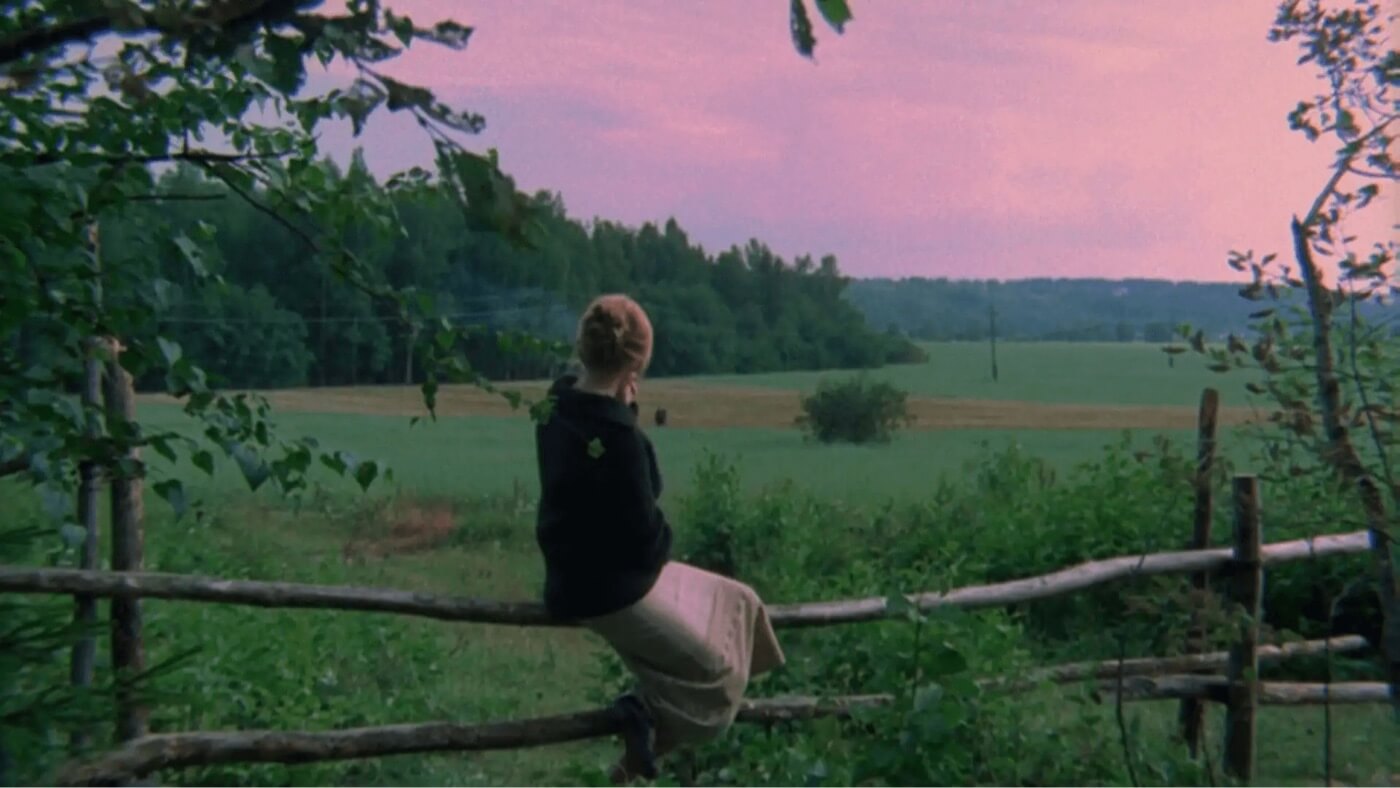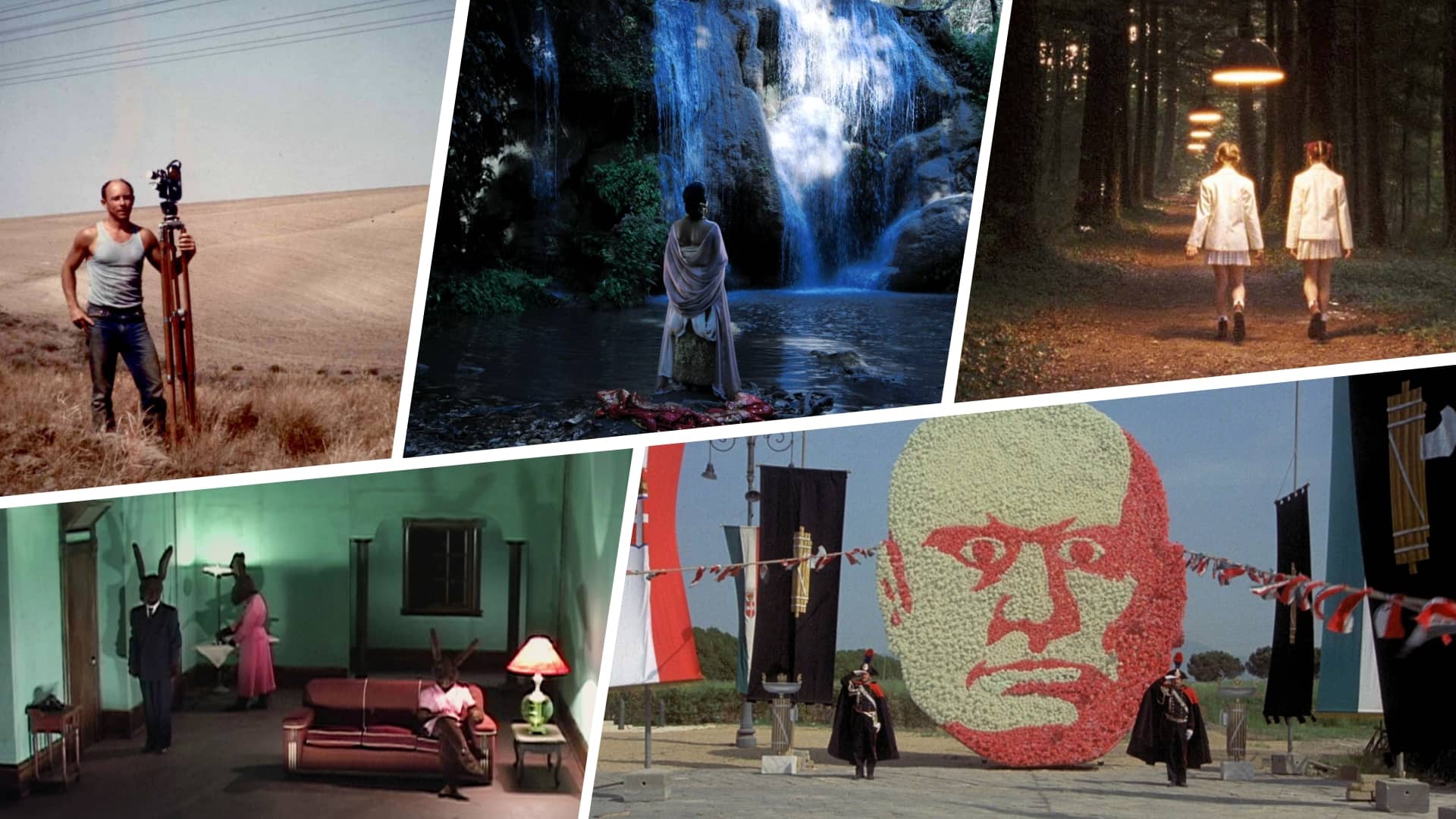Avant-garde cinema, a term synonymous with artistic rebellion and cinematic innovation, has challenged and redefined our understanding of film narrative and aesthetics. This cinematic art form bravely departs from the mainstream, offering unconventional narratives, styles, and techniques that push the boundaries of traditional filmmaking. In this post, we will dive into the history of the movement, some of the best examples, and how they function as high art.
What is Avant Garde Cinema?
First, let’s define avant-garde cinema
Blurring the lines of conventional storytelling and visual presentation, avant-garde cinema requires a more nuanced exploration to fully comprehend its essence. Let's begin by looking at the avant-garde film definition.
AVANT-GARDE FILM DEFINITION
What is Avant-Garde Cinema?
Avant-garde cinema, derived from the French term 'avant-garde' meaning 'vanguard' or 'forefront,' represents films that are experimental or innovative, pushing the boundaries of what is accepted as the norm or status quo in the cinematic world. These films often reject traditional narrative structures, explore abstract concepts, and emphasize on the visual and aural artistry of the medium.
The term avant-garde cinema was coined by French film critic and theorist, André Bazin, who noted that these pioneering works of art were emotional and even spiritual in nature, allowing viewers to explore the unknown through a unique lens.
Avant-Garde Film Characteristics:
- Non-linear storytelling
- Focus on mood and tone
- Emphasis on visual artistry
- Experimental film techniques
- Exploration of social, political, and abstract concepts
Avant-Garde Film History
History of avant-garde cinema
The origins of avant-garde cinema can be traced back to the early 20th century when it emerged alongside avant-garde movements in painting and literature.
Surrealist artists of the 1920s found immense possibilities within the cinematic medium. Some of the earliest and most iconic experimental films include René Clair's Entr'acte, Fernand Léger and Dudley Murphy's Ballet mécanique (embedded below), and Marcel Duchamp's Anémic Cinéma.
Ballet mécanique (1924, silent)
Filmmakers like Luis Buñuel and Salvador Dalí were pivotal in pioneering this innovative film genre with their groundbreaking work, Un Chien Andalou (1929), which boldly defied traditional narrative conventions.

Un Chien Andalou (1929)
Post-World War II, there was a significant surge in avant-garde filmmaking as artists and filmmakers aimed to challenge the commercial dominance of Hollywood and explore new artistic frontiers. The 1960s saw the rise of the New American Cinema movement, pushing the boundaries of traditional filmmaking with its experimental and non-conformist approach.
These avant-garde filmmakers embraced unconventional storytelling techniques, innovative editing styles, and bold visual experimentation, creating a dynamic and thought-provoking cinematic experience.
Avant-garde cinema continues to evolve and inspire contemporary filmmakers, pushing the boundaries of artistic expression and challenging conventional filmmaking norms. It remains a captivating and influential form of cinema that shapes the film industry's landscape and the evolution of the art form.
Understanding Avant-Garde Movies
Avant-garde film characteristics
Avant-garde cinema is a captivating genre that boldly challenges mainstream narrative conventions. This distinctive style of filmmaking exhibits several key characteristics, contributing to its artistic allure.
Non-linear Storytelling
Avant-garde movies deviate from traditional linear storylines. Instead, they prioritize mood, tone, and visual symbolism to convey their message. By eschewing conventional narrative structures for a non-linear structure these films invite viewers on a thought-provoking and immersive journey.

The Mirror by Andrei Tarkovsky
Emphasis on Visual Artistry
Avant-garde cinema places greater importance on visuals than dialogue or narrative. Through the use of imaginative camera work, captivating lighting techniques, and thoughtful mise-en-scène, these films create stunning visual textures that allow viewers to experience the film in a uniquely personal way.

Enter the Void by Gaspar Noé
Experimental Film Techniques
Pushing the boundaries of creativity, avant-garde cinema embraces experimentation with various film techniques. From unconventional editing to innovative cinematography, these films strive to create unique visual experiences that challenge the viewer's perception and expand the possibilities of storytelling.
Focus on Mood and Tone
Rather than relying solely on plot progression, avant-garde films prioritize the creation and exploration of mood and tone. Through deliberate use of lighting, sound design, and visual aesthetics, these films evoke emotions and immerse the audience in a rich sensory experience.

Fallen Angels by Wong Kar-wai
Exploration of Social, Political, and Abstract Concepts
Avant-garde cinema often delves into thought-provoking themes, including social commentary, political ideologies, and abstract concepts.
By pushing the boundaries of storytelling, these avant-garde movies provoke introspection, stimulate intellectual discourse, and challenge societal norms.
Related Posts
What is Avant-Garde Cinema?
Famous avant-garde films
Throughout the rich history of cinema, numerous avant-garde films and filmmakers have emerged as true pioneers in their approach and artistic vision.
Un Chien Andalou by Luis Buñuel and Salvador Dalí
Considered a surreal masterpiece, this film has become a cornerstone of the genre. Its unconventional storytelling and haunting imagery continue to captivate audiences, challenging traditional cinematic narratives.
Un Chien Andalou (1929) A Short Film by Luis Bunuel
Meshes of the Afternoon (1943) by Maya Deren
A landmark film that introduced a dream-like narrative structure, Meshes of the Afternoon remains an influential work in avant-garde cinema. Deren's exploration of the subconscious realm and symbolism paved the way for experimental storytelling techniques.
Meshes Of The Afternoon (1943) Maya Deren
Eraserhead (1977) by David Lynch
In the vast canvas of cinema, few pieces are as artistically audacious and psychologically piercing as David Lynch's Eraserhead. It's not just a film; it's an experience - one that defies the boundaries of conventional narrative and plunges you into a surreal dreamscape. Here's a scene that you're never forget.
Eraserhead · Chicken Dinner
The hauntingly uncanny visuals, coupled with the abstract storyline, exemplify Lynch's distinctive style, serving as a testament to the power of avant-garde cinema. Eraserhead isn't merely a passive viewing; it's an immersive encounter that enthralls the senses and provokes introspection. For more on how Lynch works with avant-garde techniques, watch this directing style breakdown.
David Lynch Directing Style • Subscribe on YouTube
The Color of Pomegranates by Sergei Parajanov
Through the lens of Sergei Parajanov, The Color of Pomegranates is a kaleidoscopic tapestry of brilliance. It's not your standard flick; it's a cinematic poem laced with a symphony of sounds and a tableau of vivid imagery.
Parajanov, in his audacious attempt, paints the life and work of Sayat-Nova, the 18th-century Armenian poet, not as a linear biography, but as a dreamscape of emotions, thoughts, and inner turmoil.
The film's storytelling doesn't follow conventional logic but instead, like a poem, it flits from one metaphor to the next.
The Color of Pomegranates · Sergei Parajanov (1969)
Mirror by Andrei Tarkovsk
Mirror, Andrei Tarkovsky's introspective masterpiece, deftly interweaves memory, dreams, and reality into a mesmerizing cinematic tapestry. This non-linear narrative is a deeply personal journey into Tarkovsky's own childhood and experiences, challenging the viewer to reflect alongside him.
It's an experimental film that demands attention, rewarding viewers with its profound exploration of human consciousness.
Mirror · Restoration Trailer
Soy Cuba by Mikhail Kalatozov
Soy Cuba is a groundbreaking film directed by Mikhail Kalatozov. It showcases the passion and struggles of the Cuban people during the pre-revolutionary era. The film's innovative cinematography, including breathtaking long takes and dynamic camera movements, contributes to its artistic and immersive storytelling.
Soy Cuba 1964 funeral
The importance of avant-garde cinema cannot be overstated. With its audacious creativity and exploration, it is a keystone of filmic innovation. It takes our understanding of cinematic language, bends it, breaks it, and remolds it into something thrillingly unfamiliar. In its courage to be different, it keeps the art of filmmaking eternally fresh, forever evolving, and endlessly inspiring.
Up Next
The Definitive Guide to Auteur Theory
Having explored the captivating realm of avant-garde cinema, let's now turn our attention to another influential cinematic paradigm. Next, we delve into auteur theory, which explores the unique vision and distinctive authorial voice that some filmmakers bring to their work.
Up Next: Guide to Auteur Theory →
Showcase your vision with elegant shot lists and storyboards.
Create robust and customizable shot lists. Upload images to make storyboards and slideshows.
